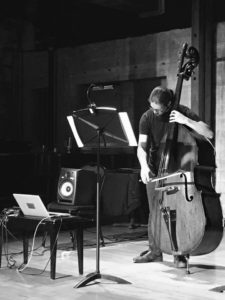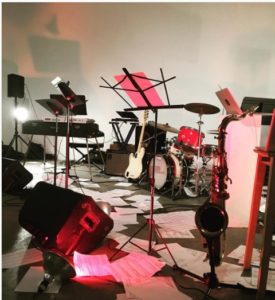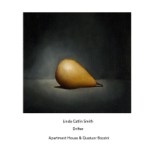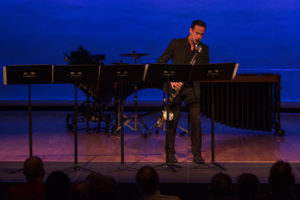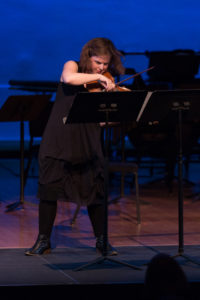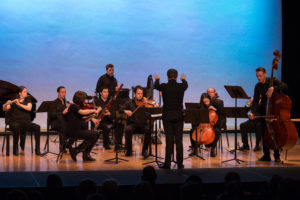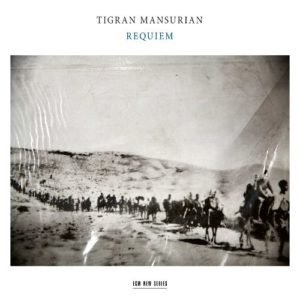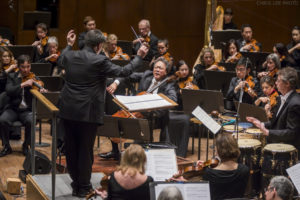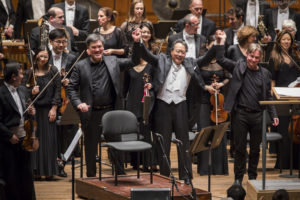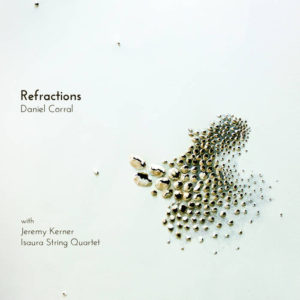 On May 6, 2017 Populist Records presented a CD release concert at Automata in Los Angeles featuring Refractions, a new album by Daniel Corral. The Koan String Quartet and guitarist Jeremy Kerner joined Corral playing music box and laptop to perform the entire album. A full house was in attendance on a chilly but otherwise quiet Saturday night in Chinatown.
On May 6, 2017 Populist Records presented a CD release concert at Automata in Los Angeles featuring Refractions, a new album by Daniel Corral. The Koan String Quartet and guitarist Jeremy Kerner joined Corral playing music box and laptop to perform the entire album. A full house was in attendance on a chilly but otherwise quiet Saturday night in Chinatown.
The evening began with two improvisational duos in the Persian tradition by Timothy Maloof and Rahman Baranghoori who arrived with violins and a recorded drone. The first of these duos began softly with sustained tones in the violin against the calming drone. The second violin entered in counterpoint, and this added to an exotic – but never alien – overall feel. The violins traded off between the sustaining melody and active counterpoint and at length, smoothly beautiful vocals by Baranghoori filled the room. The program notes explained that “The singing will be a poem in Farsi and will be decided upon in the moment – the development of the piece and the mood will dictate the poem.” Although the tones resembled our European major mode the “intonation is different than the even-tempered major scale.” In any event, the result was astonishingly expressive. There was a mournfully stoic and nostalgic wistfulness in the singing that seemed to draw from several thousand years of Persian history – perhaps the cultural memory of some great loss. That both music and poetry were improvised on the spot was all the more impressive given its beguiling effect: this was clearly the product of a very long and sophisticated tradition.
The second improvisation was built around the same recorded drone and was similar in form, but somewhat darker and more dramatic in tone. The string passages were busier and contained a bit of uncertainty while the vocals felt more plaintive and yearning. All of this simply increased the already high level of expression heard throughout this music, adding to the remarkable artistry.
After a short intermission the balance of the evening was given over to a complete performance of Refractions, the new CD by Daniel Corral. The Koan Quartet took their places along with Jeremy Kerner on electric guitar and Corral on music box and laptop. Refractions began with quiet plinking by the music box and soft, wispy sounds from the Koan Quartet as the players moved their bows lightly over the strings, barely intoning the high pitches. There was a nostalgic, wistful feeling to this as the notes from the music box approximated something like a lullaby. This placid feeling was extended by the gentle tones now coming from the strings.
As the piece progressed the passages became shorter and stronger, but somewhat less connected. Pizzicato figures and the guitar added to a more complex texture – and the music box contributed a series of short trills – but the leisurely pace and generally soft dynamics maintained the overall sense of mystical serenity. The electronics morphed into a quiet rattle and eventually the string players joined in, softly rapping and knocking on their instruments. When the arco harmonies occurred, they were especially lovely in contrast. The increasingly sharp percussive effects – and the more disconnected character of the piece by the 35 minute mark – seemed to suggest some contention between the electronics and the strings. Towards the end however, the music box returned to prominence with its lullaby and the soothing chords now heard in the strings restored order at the finish.
The acoustics of the small Automata space seemed to work in favor of this very subdued music. The Isaura String Quartet performed on the CD, and this is more intimate yet – Refractions is clearly the kind of work that benefits from precise mastering in the studio. The live performance, however, did not suffer in any way and the playing throughout was precise and controlled. The cool ambient tranquility of Refractions is a much needed antidote to the raucous confusion that infests our daily lives; this music works to elegantly recharge us in a moment of restorative calm.
Refractions is available directly from Populist Records, in physical CD format or digital download.
The Koan Quartet is:
Eric K.M. Clark, violin
Orin Hidestad, violin
Cassia Streb, viola
Jennifer Bewerse, cello
